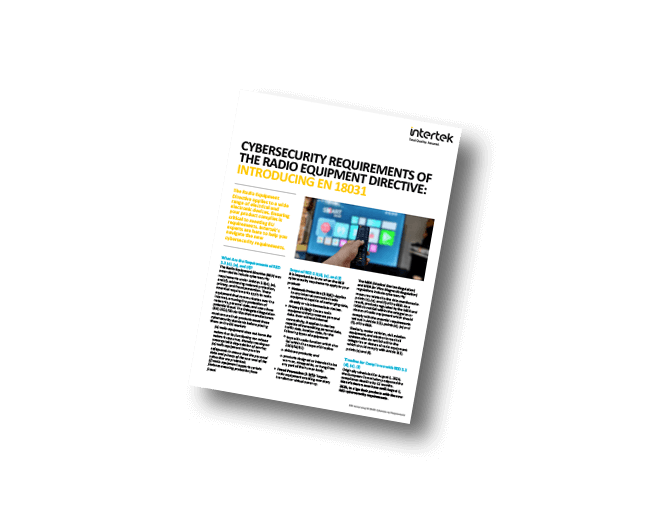RED Directive: The Cybersecurity Compliance Countdown – Part 1

08 Apr 2025
Why Cybersecurity Compliance is Non-Negotiable
In 2025, the Radio Equipment Directive (RED) isn’t just about radio waves – it’s a cybersecurity imperative. The August 1, 2025, deadline for complying with the cybersecurity requirements in Europe’s Radio Equipment Directive (RED) 2014/53/EU – Article 3(3)(d), (e), and (f) – looms large for manufacturers of IoT devices, including wearables and industrial sensors, but many still underestimate the directive’s scope while the deadline is rapidly closing in.
Understanding the Scope
RED cyber requirements in article 3.3 d-f apply to products with radio functionality, even if radio functionality isn’t its primary purpose. Generally, the requirements cover radio equipment that is directly or indirectly connected to the Internet. However, the requirements can also apply in certain scenarios to radio equipment not connected to the Internet. Manufacturers of products such as smart thermostats, home electronics, industrial machines and even connected home appliances must comply. A common misconception is that compliance applies only to devices primarily designed for communication – but even embedded communication interfaces such as cellular, Wi-Fi or Bluetooth can trigger the directives cyber requirements.
Cybersecurity Mandates Explained
RED mandates security measures under Articles 3.3(d), (e), and (f), which include:
- Network Protection: Devices must prevent unauthorized access and protect against interference.
- Data Security: User information must be encrypted and protected from breaches.
- Fraud Prevention: Security protocols should prevent identity spoofing, unauthorized transactions, and data manipulation.
Failing to comply isn’t just a regulatory risk – it can lead to market exclusion, product recalls, and reputational damage.
Global Implications and Lessons from GDPR
RED sets a precedent for cybersecurity standards beyond the EU. Just as GDPR influenced global data privacy regulations, RED is pushing a worldwide shift towards stricter cybersecurity in IoT. Manufacturers exporting to international markets should anticipate similar requirements in the U.S., APAC, and beyond.
Actionable Steps
- Conduct a Portfolio Audit: Identify all products containing radio components.
- Use the EU harmonized EN 18031-series as a Compliance Blueprint: Align early to avoid costly redesigns. Build a compliance file with necessary documentation such as risk assessment, identification of security assets, decision tree and perform verifying testing. Please also note that the harmonization of the EN18031-series contains restrictions.
Final Thought
Compliance isn’t just about meeting regulatory requirements – it’s about securing trust in your products.

